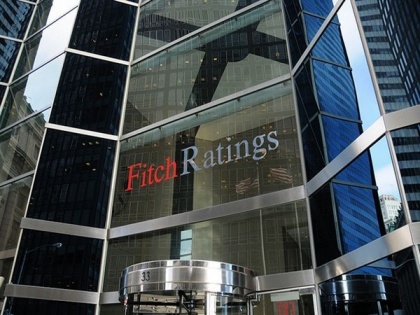India's gold-focused NBFIs' risks rise with high gold prices: Fitch
By ANI | Published: August 28, 2020 10:57 AM2020-08-28T10:57:12+5:302020-08-28T11:10:02+5:30
A surge in gold prices since the start of coronavirus pandemic has helped to support higher loan growth by some Indian non-bank financial institutions (NBFIs) that lend against the metal, a move that will bolster their interest income but the trend also raises potential risks associated with a fall in gold prices, according to Fitch Ratings.

India's gold-focused NBFIs' risks rise with high gold prices: Fitch
A surge in gold prices since the start of coronavirus pandemic has helped to support higher loan growth by some Indian non-bank financial institutions (NBFIs) that lend against the metal, a move that will bolster their interest income but the trend also raises potential risks associated with a fall in gold prices, according to Fitch Ratings.
The growth in gold-backed lending may outperform other parts of the financial sector in the near term as the product's secured nature and higher gold collateral valuations appeal to both borrowers and risk-averse lenders alike amid pandemic-driven economic uncertainty.
Among Fitch-rated issuers, Manappuram Finance and IIFL Finance saw loan growth of four to five per cent in March to June although Muthoot Finance reported a decline of one per cent in gold loans which is reflective of the issuer's lower risk appetite in an uncertain operating environment.
This compares with loan contraction of one per cent for the banking sector as a whole over the period. Fitch said the higher price of gold also increases the asset quality and collateral risks that gold lenders will face if the price falls. Gold loans are underwritten solely on the basis of the collateral value, not borrower repayment capacity.
Gold prices could fall if the global economic growth outlook improves, leading to reduced risk aversion by international investors. If this, in turn, strengthened the outlook for India's economy, it could support Indian borrowers' ability to repay debt, mitigating lenders' exposure to falling collateral values.
However, in practice, the global economic cycle will probably have a limited effect on local borrowers' incomes which tend to be more rural-centric and dependent on local-area activity.
"Moreover, we believe a lower gold price may trigger intentional defaults by some borrowers -- particularly if outstanding loan amounts start to exceed the market value of collateral pledged as they did during periods of a significant decline in 2012 and 2013," said Fitch.
One factor that will add to risks during this latest upturn in the gold price is the Reserve Bank of India's recent decision to allow banks to lend against gold at loan-to-value (LTV) ratios of up to 90 per cent until March.
If banks opt to exploit this higher LTV rate, they could pose a competitive threat to gold-focused NBFIs, and might pressure smaller entities, in particular, to lend at higher LTVs, increasing risks associated with their new lending. "However, we believe that gold lenders with strong franchise networks will be better-insulated against such competition."
Fitch said Muthoot Finance, Manappuram Finance and IIFL are all on rating watch negative which indicates that their ratings could be susceptible to a sudden deterioration in their risk profiles.
"Risks in the near term will be centred around asset quality, funding and liquidity, though we continue to view pure gold lending as less vulnerable than many other segments in the current challenging environment."
( With inputs from ANI )
Disclaimer: This post has been auto-published from an agency feed without any modifications to the text and has not been reviewed by an editor
Open in app